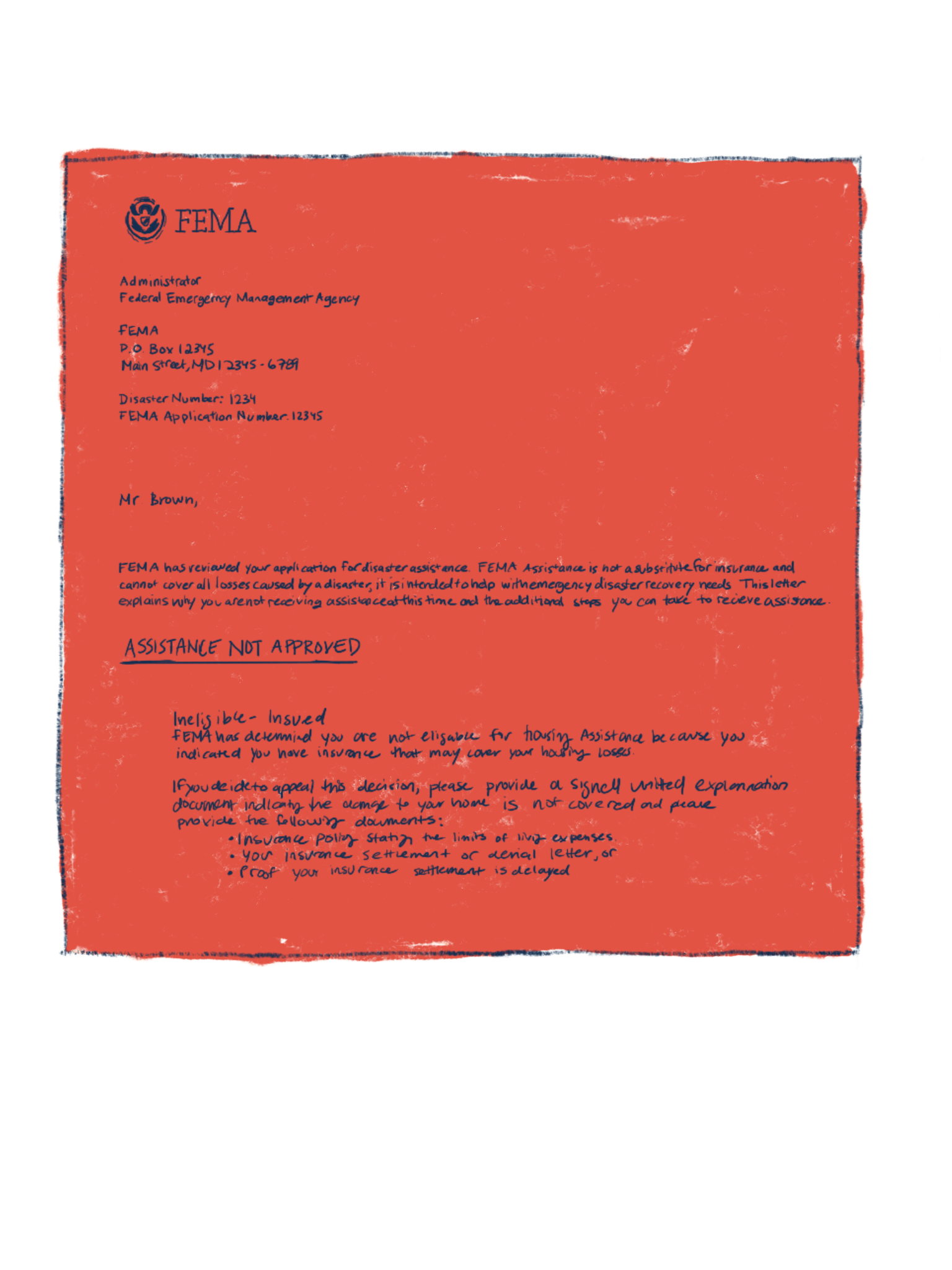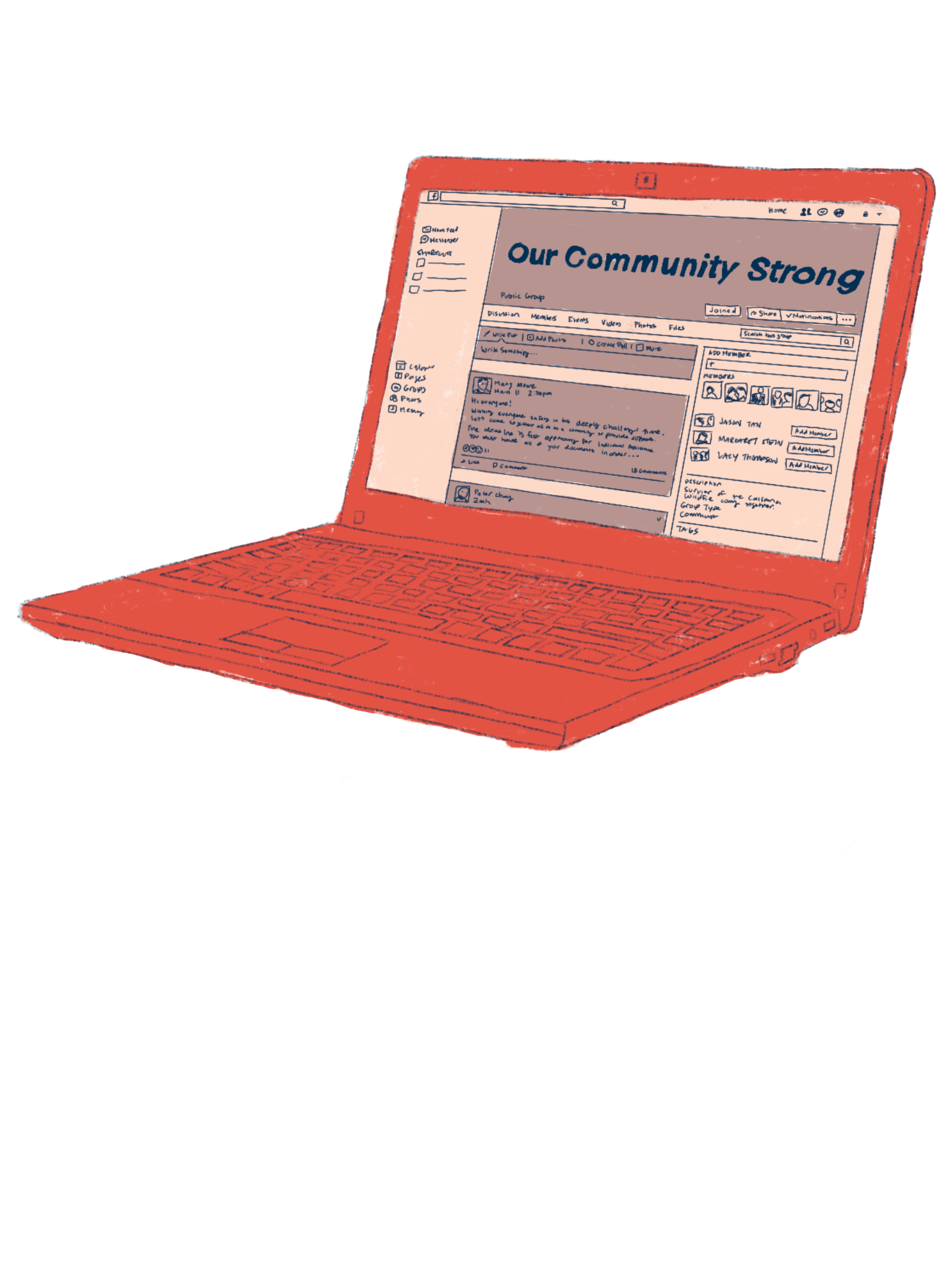I was really frustrated with all the paperwork and having to prove I needed help.
I told the case worker, 'I’ve already lost everything; haven’t I shown you enough to show you I’m deserving? Do you not trust what I’m saying?'
After receiving funds from FEMA, a son and daughter start work to rebuild their father’s home damaged by Hurricane Maria. They are starting the process by salvaging what they can until contractors, who are in high demand, can begin building a stronger concrete home.
FEMA/K.C. Wilsey
Where we are
An increasing number of Americans face natural disasters each year, yet they often lack the support necessary to fully recover.
When a natural disaster hits, survivors face the painful task of putting the pieces of their lives back together. They must care for basic needs and keep businesses going while enduring stress and trauma. On top of this, people must manage multiple bureaucratic processes with competing guidance, a confusing and frustrating journey at a moment when people expect government to show up and help.

1 Source: FEMA

Our approach
To start, we listened to people’s stories.
The Life Experience research team spoke with people nationwide about this moment in their lives and where the government process could have been simpler and more helpful. The listening sessions captured honest conversations about peoples' experiences, candid feedback on what could have worked better, and what really made a difference for them. Their stories have been combined and are represented here through illustrations. The quotes are real, but names have been changed.











The team conducted interviews in-person, virtually, in English, and in Spanish. Participants included people from twelve states and territories who have experienced hurricanes, tornadoes, and wildfires and represented various backgrounds—including low-income renters and home owners, parents, the elderly, new immigrants, veterans, and people with disabilities.
The team spoke with:
- 43 survivors
- 22 frontline staff
- 16 government / nonprofit staff
Discovery insights
Framing for collective thinking about customer pain points
How might we support survivors by minimizing the burden of navigating multiple applications?
How might we better design our information, interactions, and services for people who have endured a traumatic experience and may have ongoing stress?
How might we improve and coordinate our communications about the full range of Federal programs for the general public and small business owners alike?
Design Phase
Designing customer-centered solutions
View progress on our milestonesDesign phase pilot projects aim to build on discovery phase insights on priority customer pain points to tackle. Teams will develop and prototype solutions to measure what works. The design phase work will remain rooted in a human-centered approach, including customers in co-design and testing. The design phase will run through Fiscal Year 2023.
The project will develop standardized design guidelines to promote trauma-informed communications and interactions between agencies and disaster survivors. The work will start with collecting and assessing current communication resources, tools, and resources. The design work will involve prototyping and testing new templates and methods that promote a trauma-informed approach.
Project objectives
The project will help agency and front-line staff have the knowledge, skills, and support to take a trauma-informed approach when engaging disaster survivors. Ultimately, it will result in a more sensitive and responsive recovery experience for people impacted by disasters.
Target milestones in 2023 include:
- Host Whole Community Advisory Sessions with disaster recovery stakeholders, including people with lived experience in surviving a disaster; these sessions will engage a diverse community about the project and surface their perspectives and buy-in
- Assess tools and resources – including peer-to-peer approaches – that currently support trauma-informed knowledge-building and identify gaps the project can fill
- Build and prototype draft Federal Disaster Design Guidelines and other trauma-informed tools with users to gauge their applicability and make changes according to user insights
Primary deliverables in 2023 include:
- Interim Federal Disaster Trauma-Informed Communication Design Guidelines, including baseline template for integrated disaster overview on available assistance
- First iteration of a tool to support staff capacity and training efforts
Measures of success
Key outcomes:
The trauma-informed care project will result in increased survivor comprehension and level of engagement with assistance programs.
Design phase project measures:
- Increased numbers of participating agencies that agree to continue to adapt, and plan to adopt, design guidelines
- Feedback from disaster survivors, including small business owners, on the degree that they feel supported and respected through their interactions with Federal agencies implementing design guidelines for in-person, online, and in written touchpoints
- Improved experience measures such as trust and satisfaction in sample populations compared to the baseline in real-world tests of revised communications using the design guidelines
The project will define and blueprint an end-to-end view of the effort required of disaster survivors and small business owners to apply for, maintain, and receive Federal disaster assistance benefits. The burden estimate provides a baseline measure to calculate the impact of improvement efforts. The project will also support government-wide CX efforts by piloting a burden baseline methodology/calculator.
Project objectives
The project will create a method for calculating end-to-end burden using a uniform baseline methodology to capture psychological, learning, and time costs. High Impact Service Providers (HISPs) and agencies can utilize the example and toolkit for their burden assessments and to measure improvements and cost savings.
Target milestones in 2023 include:
- Collect program data from across agencies for core disaster assistance services
- Conduct burden analysis through user research and quantitative analysis
- Validate findings with stakeholders and subject matter experts
- Build the end-to-end summary and burden calculator for receiving Federal disaster assistance
Primary deliverables in 2023 include:
- End-to-end burden calculations and measures for Federal disaster assistance, with specific points of high burden for priority opportunities to tackle through integrated disaster assistance efforts and improvement of forms
- Toolkit for HISPs, other Life Experience teams, and Federal agencies to conduct end-to-end burden assessments and baselines
Measures of success
Key outcomes:
Federal agencies and delivery partners involved in disaster recovery utilize the burden baseline toolkit for service improvements. HISPs, other Life Experience teams, or Federal agencies use the toolkit to understand customer experience burden baselines.
Design phase project measures:
- The developed methodology generates an accurate and verified calculation of the customer experience
- Federal teams tackling more integrated assistance experience and improvement of forms for assistance utilize the resulting calculation to pinpoint targeted improvements
- Adoption of the methodology by other Life Experience and HISP teams to create a holistic estimation of burden
This project aims to clarify and simplify the experience of applying for Federal disaster assistance programs. Currently, survivors must navigate and apply for each relief program separately. These processes can be confusing, and survivors are unclear about the different kinds of assistance they may be eligible for and how to apply; once they do, they must keep track of multiple processes and communication channels and often enter the same data multiple times.
Project objectives
The project will first work on FEMA’s Individual Assistance (IA) registration process and SBA’s disaster loan application. Improving how survivors begin FEMA’s application process and clarifying how FEMA and SBA offer direct assistance programs could reduce the burden of the initial application processes for survivors.
Target milestones in 2023 include:
- Analyze data for FEMA’s IA individual assistance registration and SBA’s disaster loan program
- Create a roadmap and methods of collaboration between FEMA and SBA, including a cross-team task force and a shared backlog of projects
- Improve messaging around FEMA’s intake application and SBA’s loan program on the web, outbound communications, and call center scripts
Primary deliverables in 2023 include:
- Updated relevant Computer Matching Agreements, which permit FEMA and SBA to share data (for example, to help ensure that applicants don’t receive duplicate benefits from the same disaster)
- New disasterassistance.gov intake application for FEMA IA is available to disaster survivors
- New disaster loan application on mySBA.gov is available to disaster survivors
Measures of success
Key outcomes:
The project’s success is defined by its ability to reduce customer navigation burden, minimize duplication, and effectively communicate steps to access relevant assistance provided by multiple Federal entities, which will enable more survivors to receive the aid they are eligible for and recover more quickly.
Design phase project measures (subject to change based on discovery findings):
- Decrease application processing time by reducing redundant interactions with SBA and FEMA, such as repeated data entry. The team will use the burden calculation method and outputs from the burden estimate project, including a current state understanding of the cumulative burden disaster survivors face in applying for disaster aid from both SBA and FEMA
- Increase in access (e.g., minimize drop-off at various points, time delays due to the need for additional documentation or incomplete applications), particularly among applicants from underserved communities
- Improvements in customer experience measures such as the ease of applying for assistance, the efficiency of the application review, equity, transparency, and public trust
Project Documentation
- Project Charter
- Project One-Sheet
- Design Project Summaries
- Customer Journey Map & Stories
- Information collection approved under OMB Control #3206-0276
- Life Experience Initiative Summary
- Executive Order 14058
- President’s Management Agenda
Agency collaborators
- General Services Administration (GSA)
- Department of Housing and Urban Development (HUD)
- Department of Agriculture (USDA)
- Office of Management and Budget (OMB)
- Department of Health & Human Services (HHS)
- Small Business Administration (SBA)
- Department of the Interior (DOI)
- Department of Commerce (DOC)
- Department of Homeland Security (DHS)
